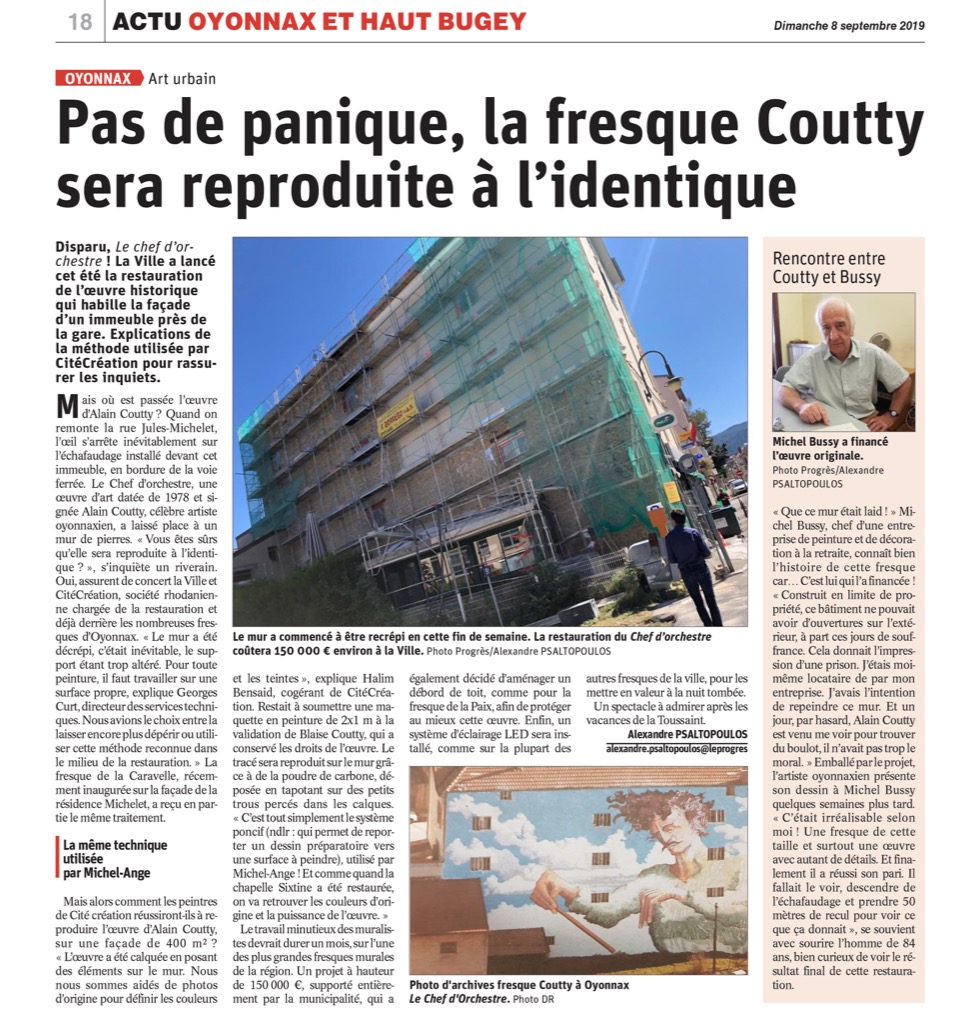Don’t panic, the Coutty mural will be reproduced in the same way – le Progrès
Gone, The Conductor! This summer, the City launched the restoration of the historic work that adorns the facade of a building near the station. Explanations of the method used by CitéCréation to reassure the worried.
But where has Alain Coutty’s work gone? When you walk up rue Jules-Michelet, your eye inevitably stops on the scaffolding installed in front of this building, along the railway track. The Conductor, a work of art dated 1978 and signed by Alain Coutty, a famous Oyonnaxian artist, has given way to a stone wall. “Are you sure it will be reproduced identically? “, worries a local resident. Yes, the City and CitéCréation, a Rhône-based company in charge of restoration, are working together to ensure that the many frescoes in Oyonnax are already behind them. “The wall was decayed, it was inevitable, the support being too altered. For any painting, you have to work on a clean surface,” explains Georges Curt, Director of Technical Services. We had the choice between letting it wither even more or using this method, which is recognized in the restaurant industry. “The fresco of the Caravelle, recently inaugurated on the facade of the Michelet residence, has received partly the same treatment.
The same technique used by Michelangelo
But then how will the painters of CitéCréation succeed in re-producing Alain Coutty’s work on a 400 m² façade? “The work was modelled by placing elements on the wall. We used original photos to define the colours and shades,” explains Halim Bensaïd, co-manager of CitéCréation. All that remained was to submit a 2×1 m painting model to Blaise Coutty for validation, who retained the rights to the work. The trace will be reproduced on the wall using carbon powder, applied by tapping on small holes drilled in the layers. “It is quite simply the pontifical system (editor’s note: which makes it possible to transfer a preparatory drawing to a surface to be painted), used by Michelangelo! And as when the Sistine Chapel was restored, we will find the original colours and the power of the work. »
The muralists’ meticulous work should last a month, on one of the largest murals in the region. A project worth €150,000, supported entirely by the municipality, which has also decided to build a roof overhang, as for the Peace Mural, in order to best protect this work. Finally, an LED lighting system will be installed, as on most other frescoes in the city, to highlight them at nightfall.
A show to admire after the All Saints’ Day holidays.
